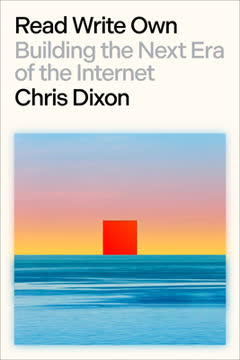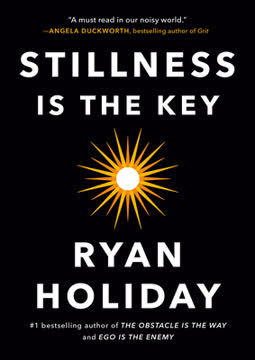Key Takeaways
1. Integrative thinking is a powerful tool for creating superior solutions
Integrative thinking is a way of thinking that enables the creation of new answers to our toughest problems, a process that uses the tension of opposing ideas to help create transformative new answers.
Definition and process. Integrative thinking is a systematic approach to problem-solving that leverages the tension between opposing ideas to create innovative solutions. It involves four key stages:
- Articulating opposing models
- Examining the models in tension
- Generating possibilities
- Assessing prototypes
Real-world applications. This approach has been successfully applied across various industries and contexts:
- Piers Handling used integrative thinking to transform the Toronto International Film Festival into a sustainable and influential event.
- Jack Bogle created the index fund at Vanguard by integrating customer-centric and shareholder-centric models.
- Tennis Canada developed a unique player development system by combining centralized control with customization.
2. Metacognition, empathy, and creativity are the foundations of integrative thinking
To change this outcome, we need a different path to creating the world around us, to generating new, superior answers, and to building genuine alignment.
Metacognition. This involves thinking about our own thinking, making our mental models explicit, and understanding the limitations of our current perspective. Tools like the ladder of inference help us examine our reasoning process and challenge our assumptions.
Empathy. Understanding and appreciating others' viewpoints is crucial for integrative thinking. This requires:
- Observation of people in their natural context
- Engagement through storytelling and dialogue
- Experience by putting ourselves in others' shoes
Creativity. Generating new ideas is essential for integrative solutions. Key principles include:
- Starting with a clear problem to solve
- Escaping the tyranny of the blank page by using existing models as raw material
- Learning the value of "bad" ideas
- Building to think through prototyping
- Giving yourself time to explore possibilities
3. Articulate opposing models to understand the problem deeply
The problem with opposing models is that sometimes only one of the models feels like the right answer.
Define the problem. Start by framing the challenge as a "How might we...?" question to encourage open-minded exploration. For example, "How might we create a model for governance of a community garden that could ensure the garden's longevity?"
Identify extreme models. Select two opposing approaches that represent the extremes of potential solutions. This creates tension and provides a broad spectrum for analysis. For instance, in addressing vaccine hesitancy, consider:
- Model A: Government-mandated vaccination program
- Model B: Entirely parent-driven choice system
Sketch the models. Describe each model in enough detail that an observer could understand its essence. This helps ensure all team members are discussing the same concepts.
Explore benefits. Use a "pro/pro" chart to analyze the positive aspects of each model from multiple stakeholder perspectives. This approach encourages empathy and deeper understanding of opposing viewpoints.
4. Examine models in tension to find leverage points for integration
Integrative thinking leverages the tension between models to create something new.
Hold models in tension. Analyze similarities, differences, and most valued aspects of each model. This process helps identify potential areas for integration and innovation.
Question assumptions. Challenge the underlying beliefs that support each model. For example, in the vaccine debate, question assumptions about parental responsibility and public health priorities.
Analyze cause and effect. Create causal models to understand the forces driving outcomes in each approach. This can reveal unexpected connections and opportunities for integration.
Find leverage points. Look for elements that could be combined or reimagined to create a superior solution. In the TIFF example, Handling identified "buzz" as a key leverage point, leading to the creation of the People's Choice Award.
5. Generate possibilities by exploring hidden gems, doubling down, or decomposing
To change this outcome, we must redefine creativity as something each of us has the capacity to do. But we also must make a choice to actually do it.
Hidden gem approach. Take one core element from each opposing model and discard the rest. Combine these elements to create a new, integrated solution. Example: Tennis Canada combined centralized control (French model) with customization (American model) to create a unique development system.
Double down approach. Intensify one model to capture a vital benefit of the opposing model. Example: Piers Handling doubled down on inclusivity at TIFF to generate the buzz typically associated with exclusive festivals.
Decomposition approach. Break the problem into distinct parts and apply each model to separate elements. Example: The Manitoba Hydro building separated heating/cooling from ventilation to achieve both energy efficiency and livability.
Key principles for generating possibilities:
- Use all three pathways as thought starters
- Defer judgment to encourage idea flow
- Build on others' ideas to foster collaboration
6. Assess prototypes through storytelling, visualization, and testing
Just because something can't be proven doesn't mean it can't be understood; just because we can't know for sure doesn't mean we can't know anything; and just because we don't have existing data to "prove" an idea doesn't mean we can't find ways to generate the data we need to improve our odds of success.
Define possibilities concretely. Use three approaches to clarify and communicate new ideas:
- Storytelling: Create narratives that explain how the solution works and its impact
- Visualization: Use drawings or storyboards to illustrate concepts
- Physical modeling: Build simple prototypes to explore and refine ideas
Understand the logic. For each possibility, identify the conditions under which it would be a winning solution for key stakeholders. This helps clarify the assumptions and requirements for success.
Design and conduct tests. Focus on falsification rather than proof. Create experiments to challenge assumptions and generate new data about the viability of each possibility. Embrace iterative testing and refinement to improve ideas over time.
7. Develop an integrative thinking stance to transform decision-making
Integrative thinking becomes a way of being only when we reframe the idea of closure.
Stance about the world:
- Models are simplified constructions and inherently flawed
- Opposing views offer opportunities to improve our understanding
- The world is full of possibilities for better solutions
Stance about your role:
- Clarify your own thinking and open it to inquiry
- Genuinely engage with opposing views
- Patiently search for integrative solutions
Cultivating the stance. Practice integrative thinking to develop this mindset over time. Small shifts in behavior, like Jabril switching from pen to pencil, can lead to significant changes in approach and outcomes.
8. Overcome cognitive biases and organizational barriers to innovation
To produce better decisions, we need a better process. We need a way of thinking through and creating choices that mitigates, rather than amplifies, the effects of our deeply held mental models and biases.
Common biases:
- Confirmation bias: Seeking information that supports existing views
- Affinity bias: Preference for those similar to us
- Projection bias: Assuming others think like we do
Organizational barriers:
- Linear, consensus-driven processes
- Pressure for quick decisions
- Fear of failure and risk aversion
Strategies for improvement:
- Encourage diverse perspectives and constructive dissent
- Create psychological safety for sharing ideas
- Embrace complexity and ambiguity in the problem-solving process
- Shift from "proving" ideas to learning through experimentation
- Develop a long-term orientation, as demonstrated by Unilever CEO Paul Polman
By adopting integrative thinking practices and cultivating an open mindset, individuals and organizations can overcome these barriers to create truly innovative solutions to complex problems.
Last updated:
Review Summary
Creating Great Choices receives mostly positive reviews for its practical approach to integrative thinking. Readers appreciate the step-by-step guidance, templates, and exercises for problem-solving and decision-making. The book is praised for its clear explanations of complex concepts and its emphasis on considering multiple perspectives. Some find it particularly useful for management roles and challenging organizational problems. A few reviewers note that the book can be slow or academic at times, but overall, it's seen as a valuable resource for developing creative solutions and breaking out of limited thinking patterns.
Similar Books










Download PDF
Download EPUB
.epub digital book format is ideal for reading ebooks on phones, tablets, and e-readers.




